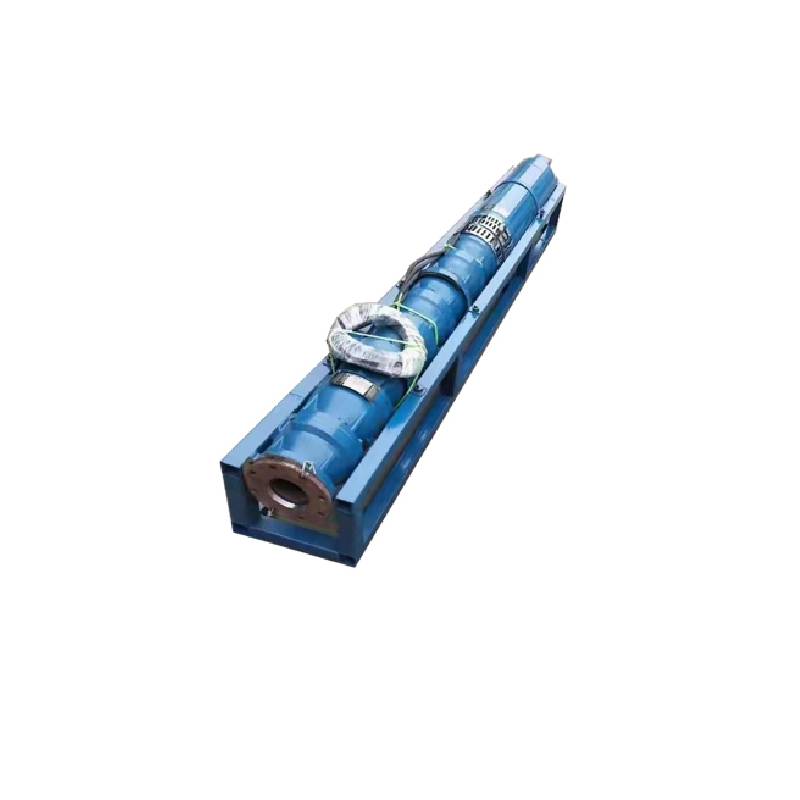Jul . 26, 2024 15:41 Back to list
Steps to Successfully Prime Your Submersible Well Pump for Optimal Performance and Longevity
Priming a Submersible Well Pump A Comprehensive Guide
Submersible well pumps are essential components in water supply systems, often found in residential, agricultural, and industrial applications. These pumps are submerged under water, which helps in efficient operation and cooling. However, one critical step before these pumps can function effectively is the priming process. Priming a submersible well pump entails removing air from the pump and fill it with water, ensuring that it operates smoothly and efficiently.
Understanding Priming
Priming is crucial because a pump filled with air cannot create the necessary suction to lift water from the well. Air in the pump can lead to cavitation, which can cause significant damage over time. Therefore, properly priming your submersible well pump is vital to ensuring its longevity and operational efficiency.
Steps to Prime a Submersible Well Pump
1. Preparation Before beginning the priming process, gather all necessary tools. This includes a hose, a bucket of clean water, and potentially a wrench for any connections you may need to loosen.
2. Shut Off Power Always ensure that the power to the pump is off before starting any work. This is crucial for safety reasons.
3. Access the Pump If the pump has been submerged for an extended period, ensure that it is accessible. You may need to pull it from the well to gain access to the discharge head.
priming a submersible well pump

4. Fill the Pump with Water - If the pump is equipped with a priming plug or vent, remove it. - Pour water directly into the pump until it is full, which can typically be done using a hose or bucket. - If you are unsure about the right amount, filling to the brim is usually sufficient.
5. Check for Airlocks Once water has filled the pump, reassess the connections and check for any potential airlocks that may prevent water from flowing. Airlocks can occur in the piping due to improper installation or during maintenance.
6. Reconnect and Power Up After ensuring there is no air in the pump and all connections are tight, replace the priming plug. Restore power to the pump and observe whether it starts drawing water.
7. Observe Operation Watch for any abnormal noises or vibrations during operation. If the pump struggles or fails to operate normally, there may still be air trapped in the system. In this case, it may be necessary to repeat the priming process or investigate further for blockages.
Maintenance Tips
Regular maintenance of a submersible well pump is essential to ensure its long-term functionality. Periodically check for any signs of wear, corrosion, or leaks, and ensure that the electrical connections are secure. It’s advisable to avoid running the pump dry, as this can lead to overheating and irreparable damage.
Conclusion
Priming a submersible well pump is a straightforward process that is crucial for its proper function. By ensuring that the pump is free of air, users can maintain an efficient water supply system that operates reliably over time. Regular monitoring and maintenance further enhance the longevity of the pump, preventing costly repairs or replacements. Following the guidelines laid out in this article will help you successfully prime your submersible well pump and keep it in optimal working condition.
-
Submersible Water Pump: The Efficient 'Power Pioneer' of the Underwater World
NewsJul.01,2025
-
Submersible Pond Pump: The Hidden Guardian of Water Landscape Ecology
NewsJul.01,2025
-
Stainless Well Pump: A Reliable and Durable Pumping Main Force
NewsJul.01,2025
-
Stainless Steel Submersible Pump: An Efficient and Versatile Tool for Underwater Operations
NewsJul.01,2025
-
Deep Well Submersible Pump: An Efficient 'Sucker' of Groundwater Sources
NewsJul.01,2025
-
Deep Water Well Pump: An Efficient 'Sucker' of Groundwater Sources
NewsJul.01,2025
-
 Submersible Water Pump: The Efficient 'Power Pioneer' of the Underwater WorldIn the field of hydraulic equipment, the Submersible Water Pump has become the core equipment for underwater operations and water resource transportation due to its unique design and excellent performance.Detail
Submersible Water Pump: The Efficient 'Power Pioneer' of the Underwater WorldIn the field of hydraulic equipment, the Submersible Water Pump has become the core equipment for underwater operations and water resource transportation due to its unique design and excellent performance.Detail -
 Submersible Pond Pump: The Hidden Guardian of Water Landscape EcologyIn courtyard landscapes, ecological ponds, and even small-scale water conservancy projects, there is a silent yet indispensable equipment - the Submersible Pond Pump.Detail
Submersible Pond Pump: The Hidden Guardian of Water Landscape EcologyIn courtyard landscapes, ecological ponds, and even small-scale water conservancy projects, there is a silent yet indispensable equipment - the Submersible Pond Pump.Detail -
 Stainless Well Pump: A Reliable and Durable Pumping Main ForceIn the field of water resource transportation, Stainless Well Pump has become the core equipment for various pumping scenarios with its excellent performance and reliable quality.Detail
Stainless Well Pump: A Reliable and Durable Pumping Main ForceIn the field of water resource transportation, Stainless Well Pump has become the core equipment for various pumping scenarios with its excellent performance and reliable quality.Detail
